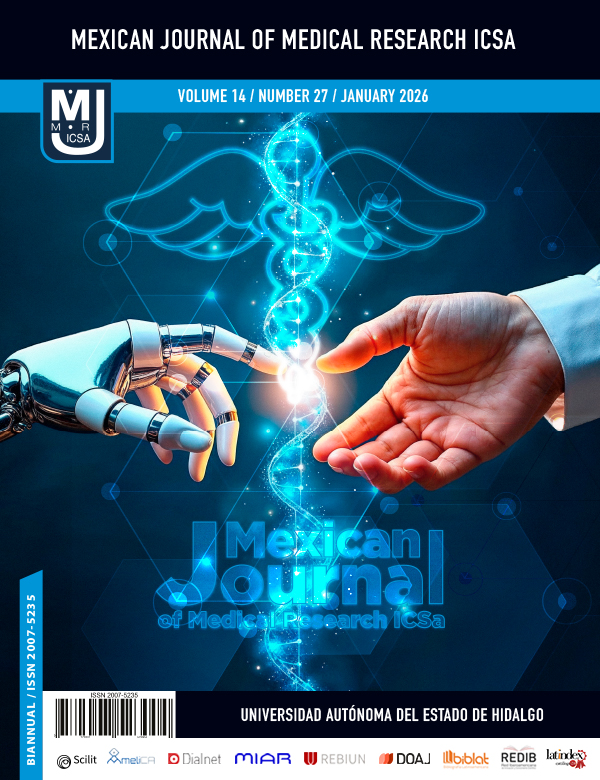Intrinsic and Extrinsic Factors Affecting the Color Stability of Resin Cements
Keywords:
Resin cements, Amine-free resin cements, Color stability, AestheticsAbstract
Resin cements play a fundamental role in the adhesion of indirect restorations in dentistry; however, their color stability is a concern for every dentist, especially in the aesthetic context. Traditional resin cements contain tertiary amines as polymerization co-initiators, which can influence color change over time. In response to this limitation, amine-free resin cements have been developed to improve color stability. However, it should be taken into account that this type of cement also has its limitations. The absence of amines may reduce the rate and degree of conversion, potentially compromising the material's integrity. In addition, some photoinitiators are not compatible with all curing lights available on the market, among other limitations. This article analyzes the factors that influence the color change of these cements, including internal factors such as the composition of the organic and inorganic matrix, and external factors such as exposure to staining agents. The changes that these types of cements undergo can be detected through the CIE Lab® system, one of the most widely used methods for color evaluation.
Downloads
Publication Facts
Reviewer profiles N/A
Author statements
- Academic society
- N/A
- Publisher
- Universidad Autónoma del Estado de Hidalgo
References
[1] Pissaia JF, de Almeida Guanaes BK, de Almeida Kintopp CC, Correr GM, Fernandes da Cunha L, Castiglia Gonzaga C. Color stability of ceramic veneers as a function of resin cement curing mode and shade: 3-year follow-up. PLoS One. 2019; 14(7): e0219812.
[2] Heboyan A, Vardanyan A, Karobari MI, Marya A, Avagyan T, Tebyaniyan H, et al. Dental luting cements: an updated comprehensive review. Molecules. 2023; 28(4): 1619.
[3] Yang Y, Wang Y, Yang H, Chen Y, Huang C. Effect of aging on color stability and bond strength of dual-cured resin cement with amine or amine-free self-initiators. Dent. Mater. J. 2022; 41(1): 17–26.
[4] Albaheli BI, Elawsya ME, Ali AI. Microleakage of lithium disilicate veneers bonded to different substrates with light-cure and dual-cure resin cements. J. Clin. Exp. Dent. 2024; 16(4): e431-9.
[5] Zhou W, Liao ZX, Chen JH, Qiu BY, Zhang Y, Zhang L. Color change of glass ceramic restorations cemented by four types of dual-cured resin luting agents with different initiator systems. Dent. Mater. J. 2022; 41(6): 833-42.
[6] Huang W, Ren L, Cheng Y, Xu M, Luo W, Zhan D, et al. Evaluation of the color stability, water sorption, and solubility of current resin composites. Materials. 2022; 15(19): 6710.
[7] Santos M, Fidalgo-Pereira R, Torres O, Carvalho O, Henriques B, Özcan M, et al. The impact of inorganic fillers, organic content, and polymerization mode on the degree of conversion of monomers in resin-matrix cements for restorative dentistry: a scoping review. Clin. Oral Investig. 2024; 28(8): 454.
[8] Fidalgo-Pereira R, Torres O, Carvalho Ó, Silva FS, Catarino SO, Özcan M, et al. A scoping review on the polymerization of resin-matrix cements used in restorative dentistry. Materials (Basel) 2023; 16(4): 1560.
[9] Ferracane JL. A historical perspective on dental composite restorative materials. J. Funct. Biomater. 2024; 15(7): 173.
[10] Tabatabaei MH, Matinfard F, Ahmadi E, Omrani LR, Mahounak FS. Color stability of ceramic veneers cemented with self-adhesive cements after accelerated aging. Front. Dent. 2019; 16(5): 393-401.
[11] Meleka NM, El-Banna A, El-Korashy DI. Color stability and degree of conversion of amine-free dual-cured resin cement used with two different translucencies of lithium disilicate ceramics. Braz. Dent. Sci. 2023; 26(2): e3614.
[12] Lei MA, Macchi RL, Picca M. Effect of photopolymerization time on the microhardness of resin cement beneath feldspathic ceramic. Acta Odontol. Latinoam. 2023; 36(1): 40-6.
[13] Hickel R, Mesinger S, Opdam N, Loomans B, Frankenberger R, Cadenaro M, et al. Revised FDI criteria for evaluating direct and indirect dental restoration recommendations for its clinical use, interpretation, and reporting. Clin. Oral Investig. 2023; 27(6): 2573-92.
[14] Reyes-Angeles MC, Cuevas-Suárez CE, Trejo-Carbajal N, Herrera-González AM, Rivera Gonzaga JA. Evaluation of novel fluorescent 1,5-naphthalene-bis(allylcarbonate) monomer used in the formulation of dental composite resins. Polym. Bull. 2024; 81(9): 8159-76.
[15] Crespo PC, Córdova AK, Palacios A, Astudillo D, Delgado B. Variability in tooth color selection by different spectrophotometers: A Systematic Review. Open Dent. J. 2022; 16: e187421062211180.
Downloads
Published
How to Cite
Issue
Section
License
Copyright (c) 2025 Janira T. López-Pérez

This work is licensed under a Creative Commons Attribution-NonCommercial-NoDerivatives 4.0 International License.


















